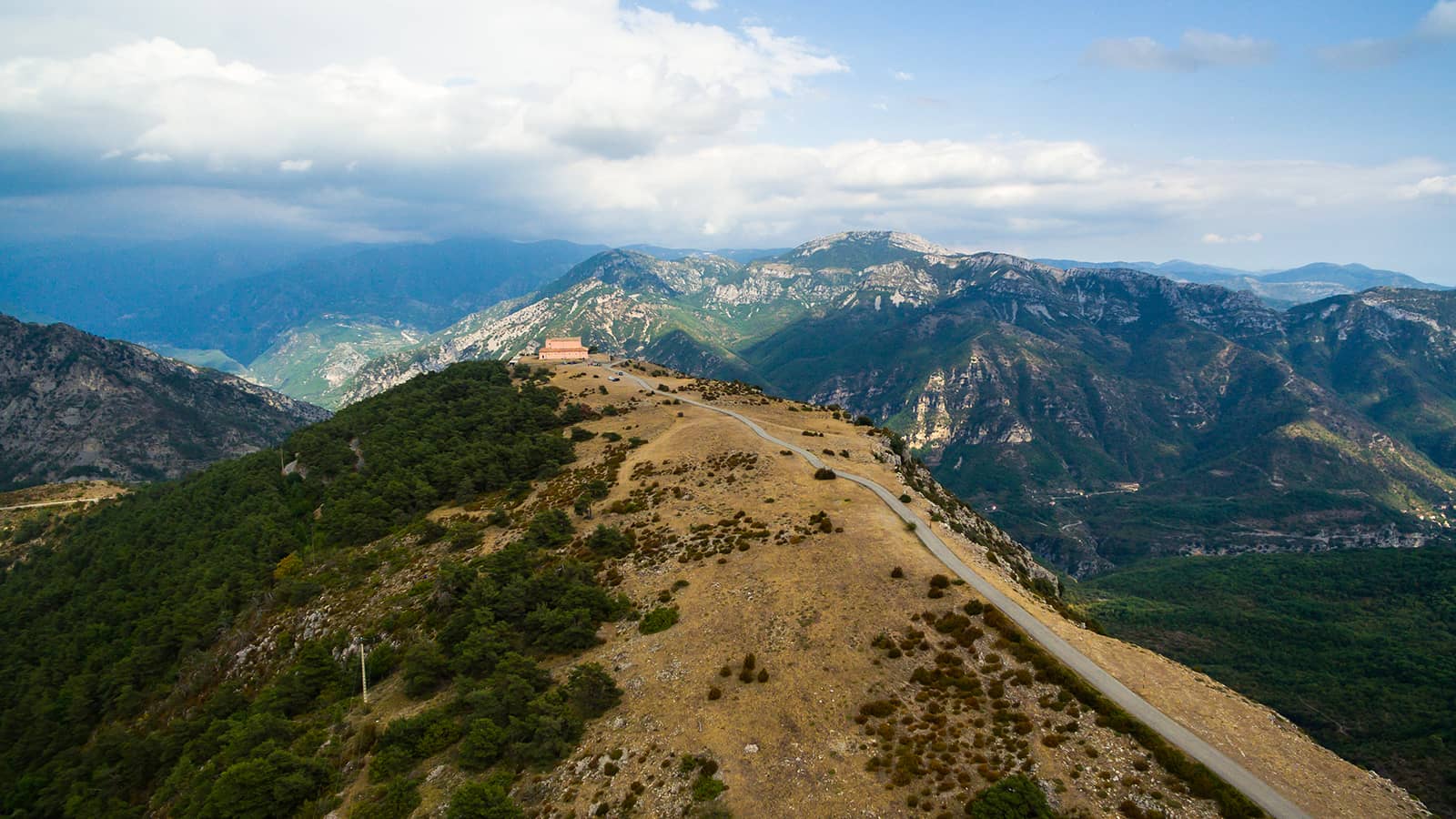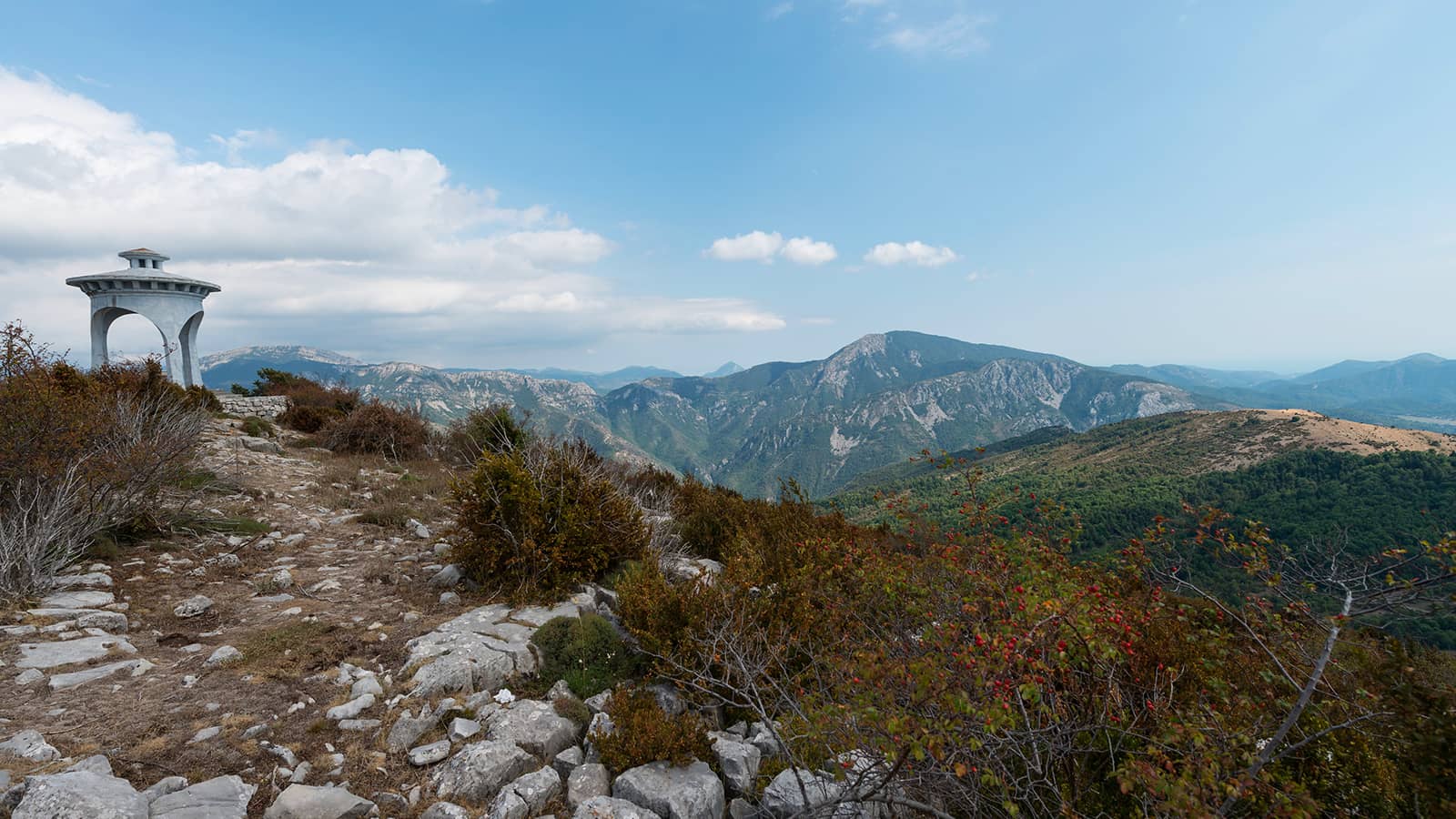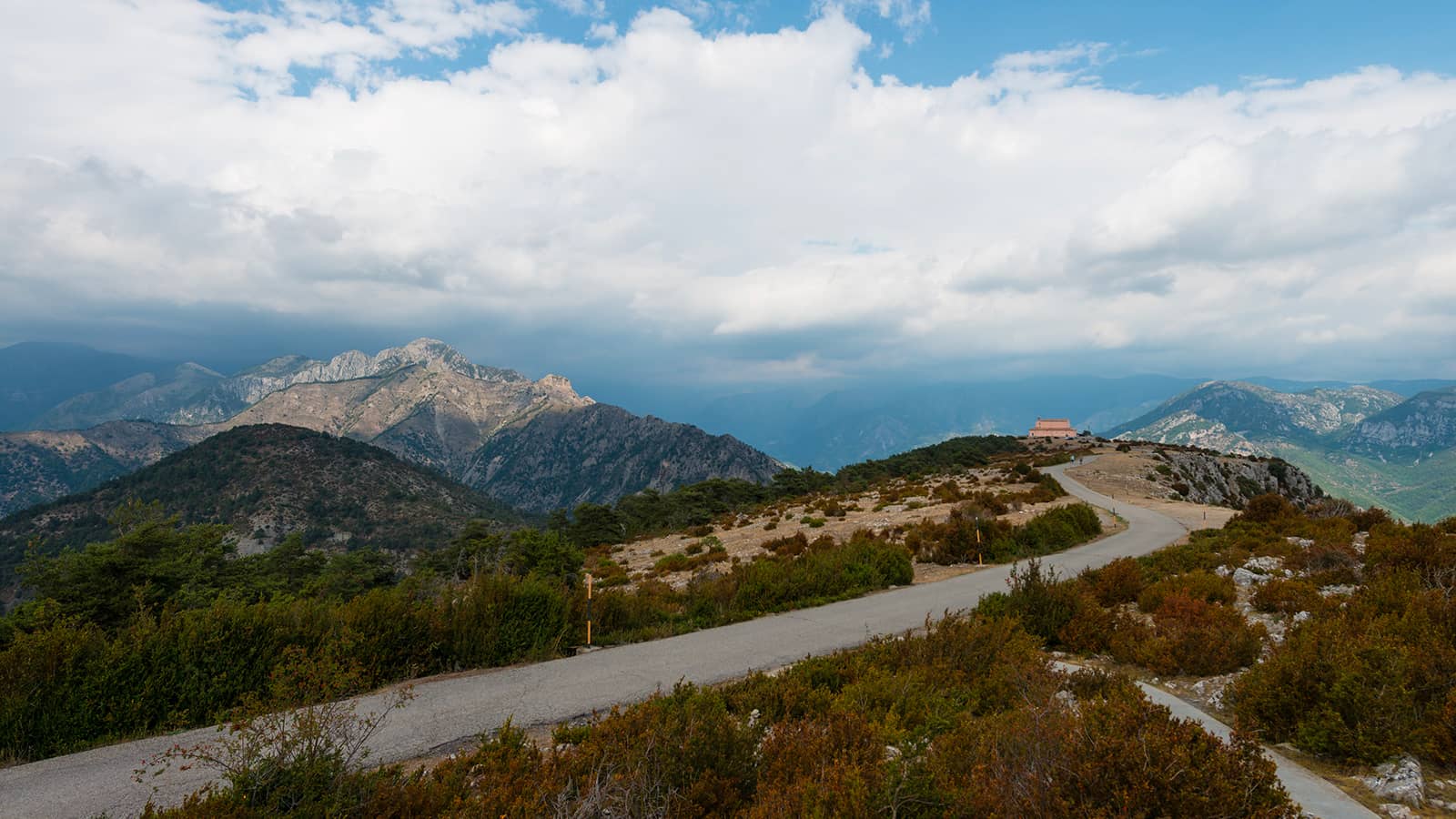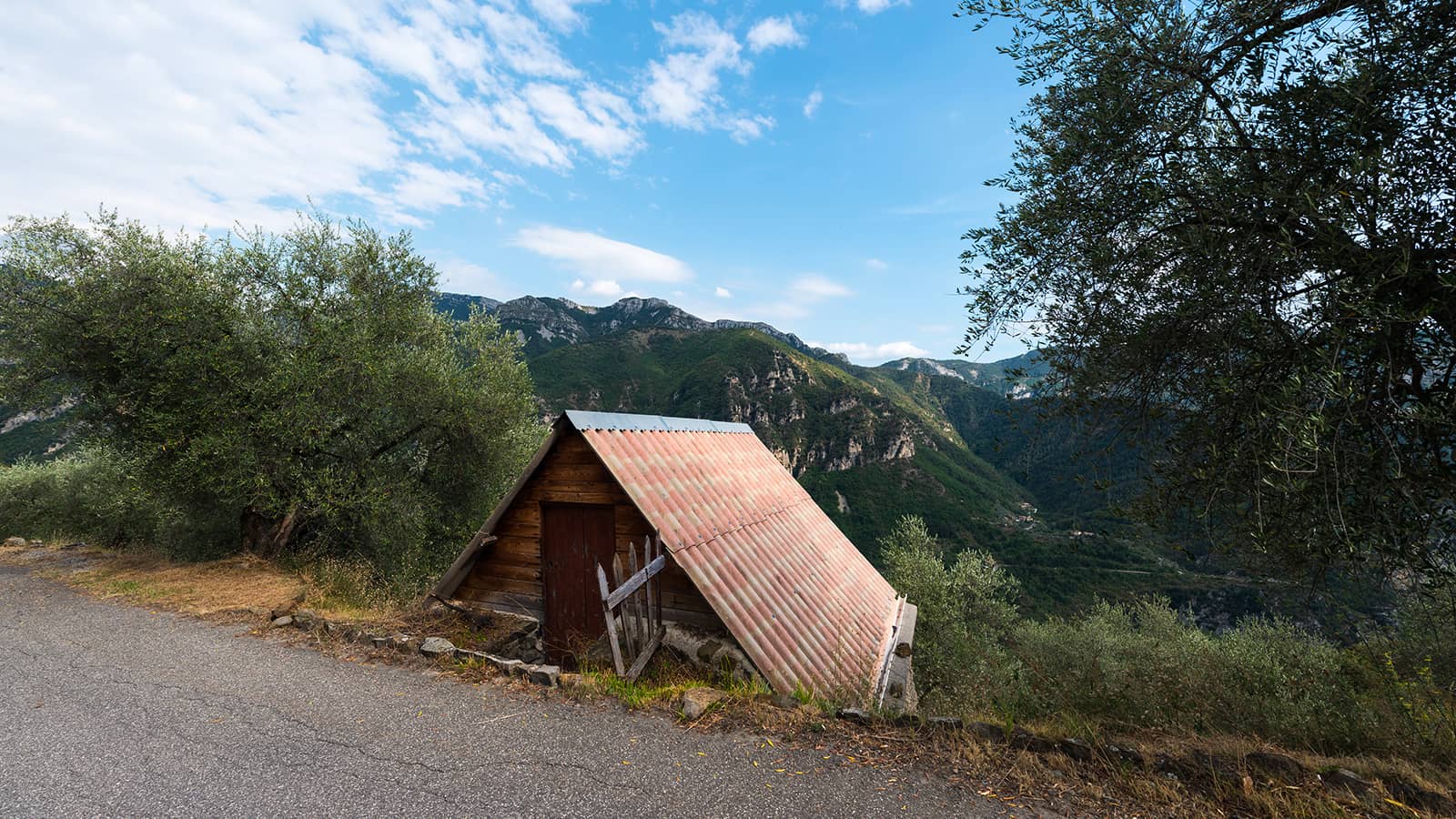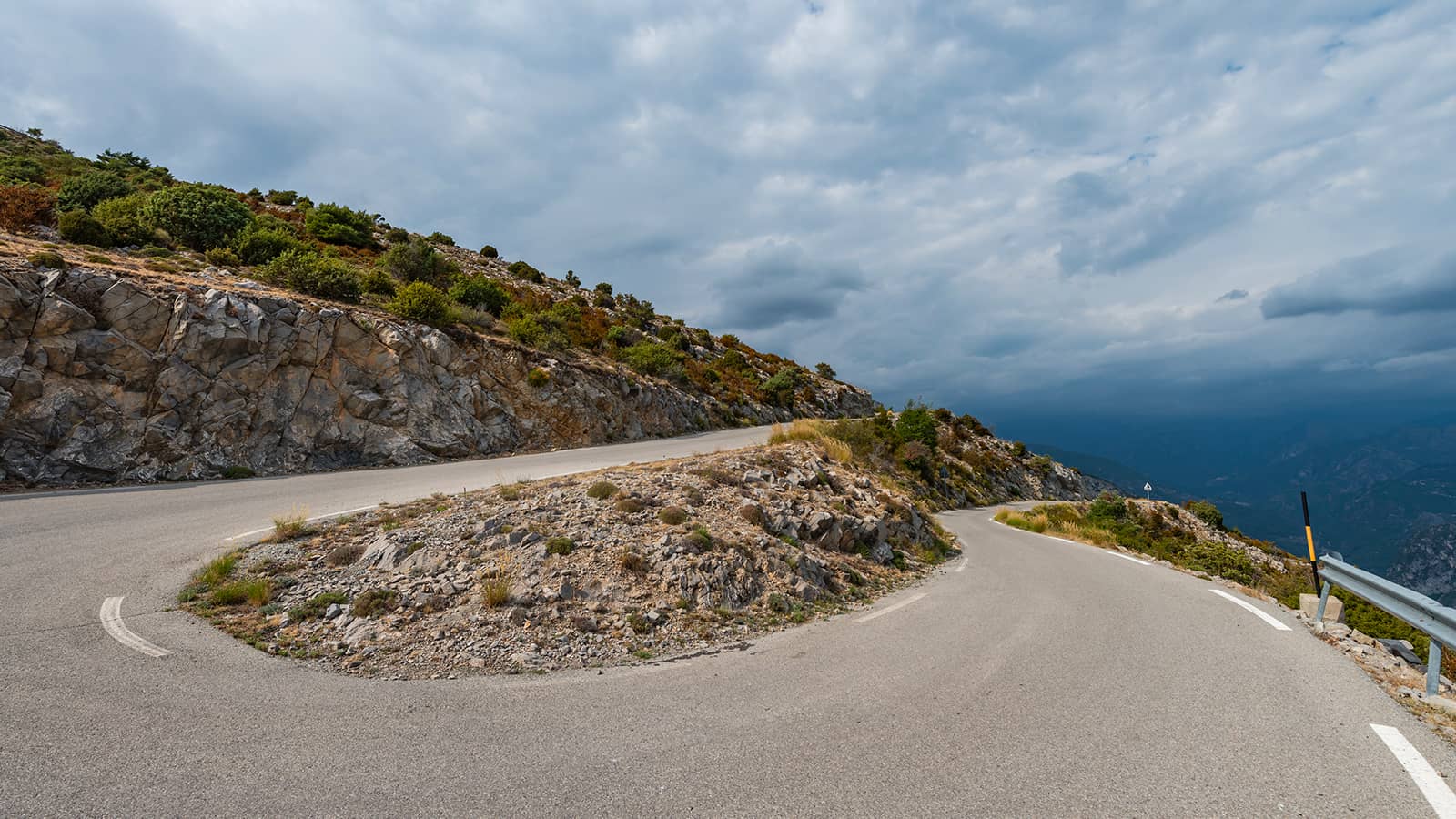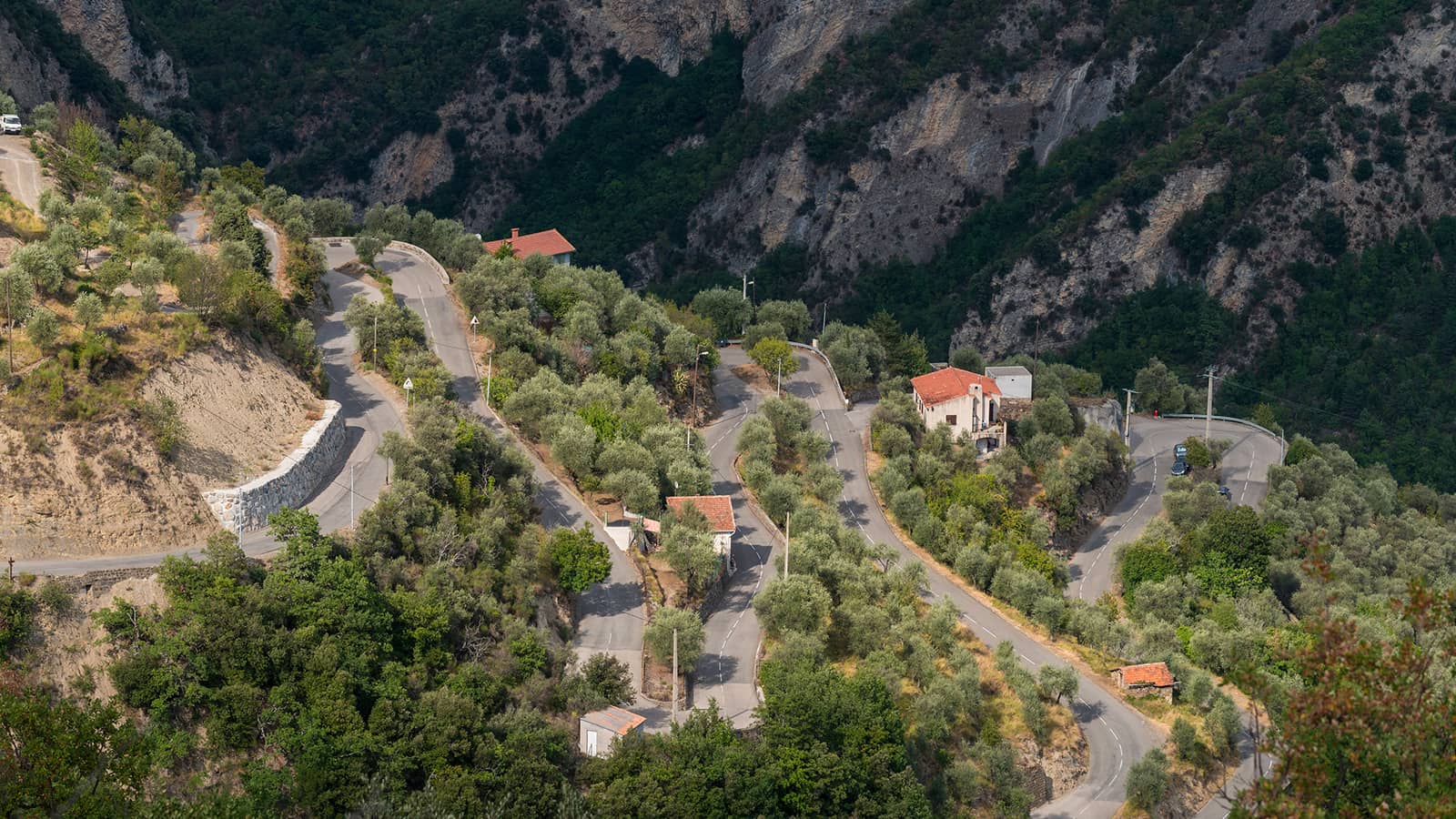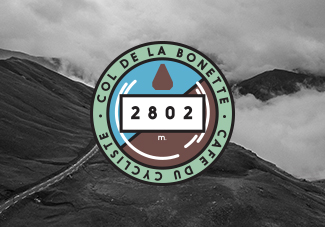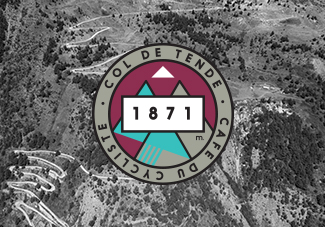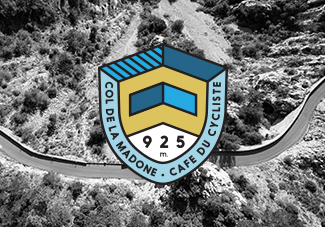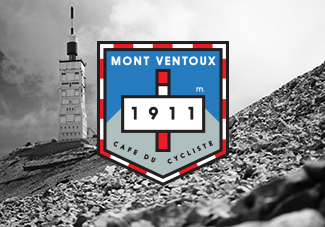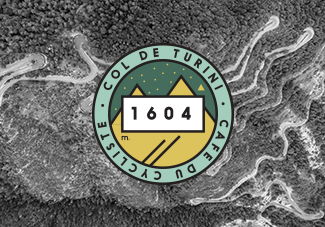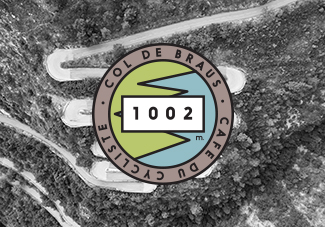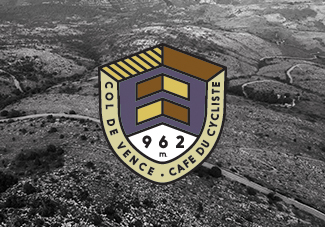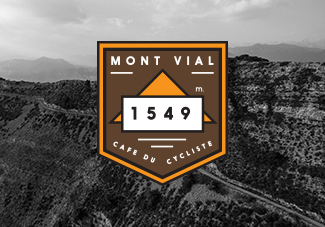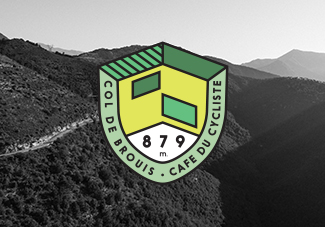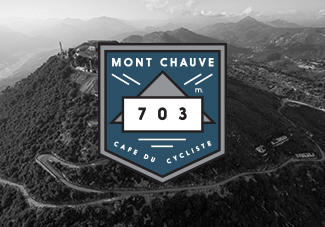Madone d’Utelle: Nos montagnes à la carte #1
As ships navigate across the sea according to certain fixed points in heaven, or on a faraway shore, so do cyclists when riding through familiar or unfamiliar territory. A hill on the horizon, a particular house that denotes a turning, or the sea shining down below.
Ride in the back country around Nice, and one of those reference points is the chapel of the Madone d’Utelle. It sits next to an aerial on a bluff that dominates the Var valley at the confluence of the Esteron and the Tinée, and is, next to the antenna atop Mont Vial close by, a constant presence.
We owe this guidance to Spanish sailors.
Over a thousand years ago – or so the story goes – the seamen were caught in a terrible tempest one night on the Mediterranean Sea. Close to death, they promised to build a chapel dedicated to the Virgin Mary if their lives were spared. At once their prayers were answered: the mother of God appeared in the landward sky, and a blinding holy light illuminated a mountain for them. The sky and the sea quietened and the Spaniards were saved.


